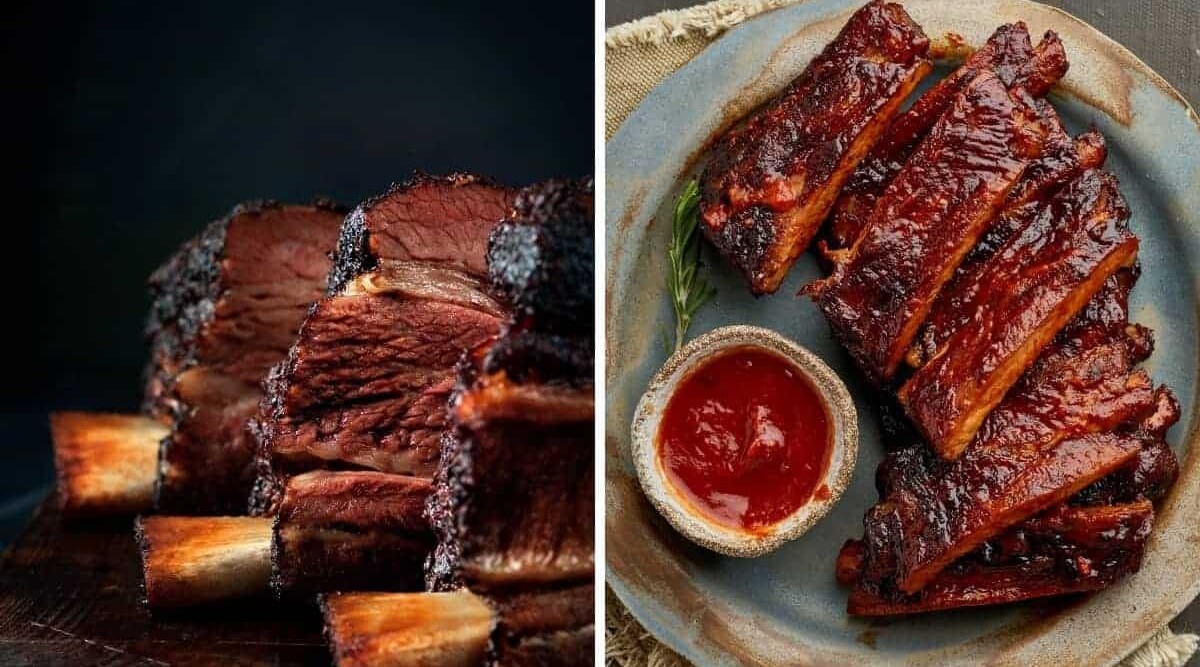
Today we’re comparing beef ribs to pork ribs to learn the differences and the similarities. You’ll learn the various rib cuts, their names and how they look, nutritional and pricing information, and how to cook them.
Carnivores are virtually united in their love of ribs. If I weren’t already convinced this opinion was correct, it was cemented when I did a search on, “Why do people like ribs?”
This led me to an article eye-catchingly titled (in full caps), “YOU’RE STUPID IF YOU DON’T LIKE RIBS!” The only support for this assertion is a parade of food porn shots of different kinds of ribs. Of course, I agree, though I may not have expressed it quite the same way.
But, it’s a simple truth that ribs are delicious, and they’re fun to eat. You can dress them up so many ways, cook them in almost anything — in short, you never have to have the same rib experience twice. But, which ribs should you start with?
Keep reading for the full rib-stravaganza!
Jump to:
- 1 At a Glance Comparison Table
- 2 Difference in Taste Between Beef Ribs and Pork Ribs
- 3 Size Comparison
- 4 Pork Rib Cuts Overview
- 5 Beef Rib Cuts Overview
- 6 A Comparison of Fat to Meat Ratio and Fat Content
- 7 Pork Ribs Nutritional Info
- 8 Beef Ribs Nutritional Info
- 9 Price Comparison
- 10 My Experience and Views on Beef Ribs Vs Pork Ribs
- 11 How to Cook Pork Ribs
- 12 How to Cook Beef Ribs
- 13 Where to Buy Beef Ribs Online
- 14 Where to Buy Pork Ribs Online
- 15 Final Thoughts
At a Glance Comparison Table
It’s important to note that the values below can vary wildly based on the breed of cattle or pig the ribs come from, can vary animal to animal, and depend on how the ribs are prepared and cooked. But I’ll provide a general overview based on typical servings of typical cuts.
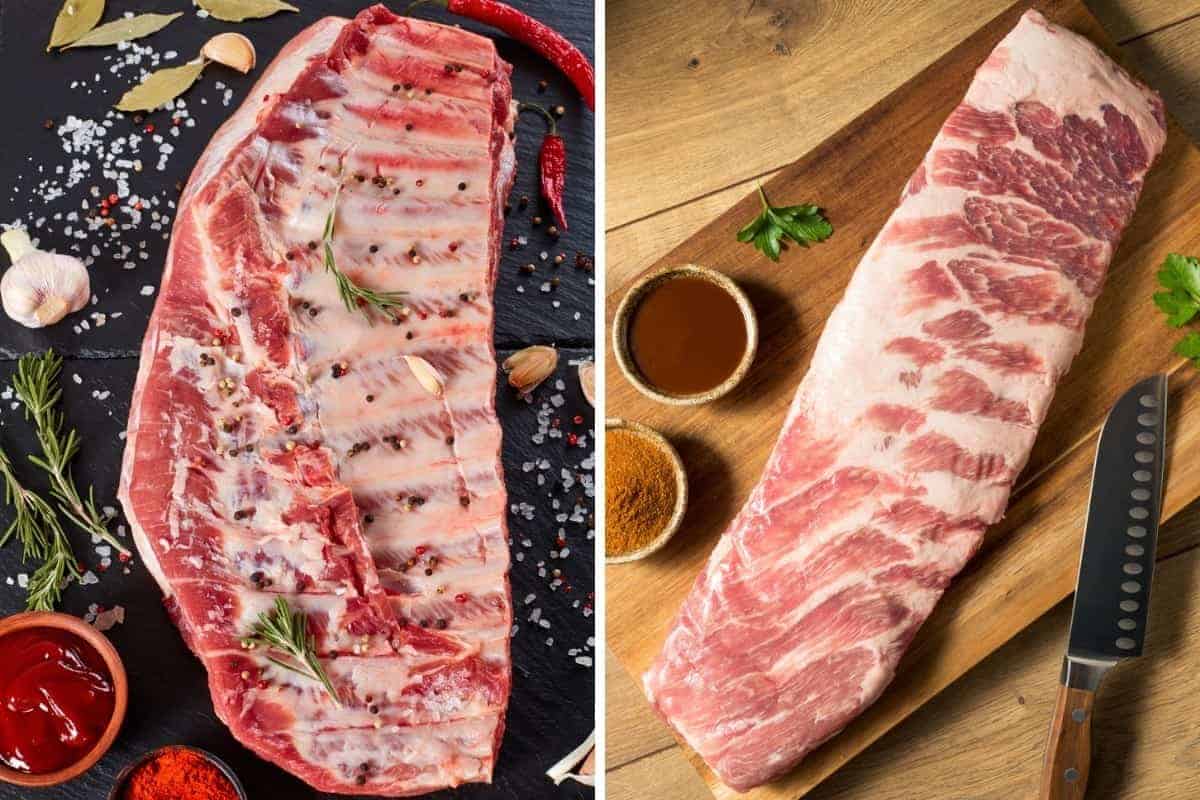
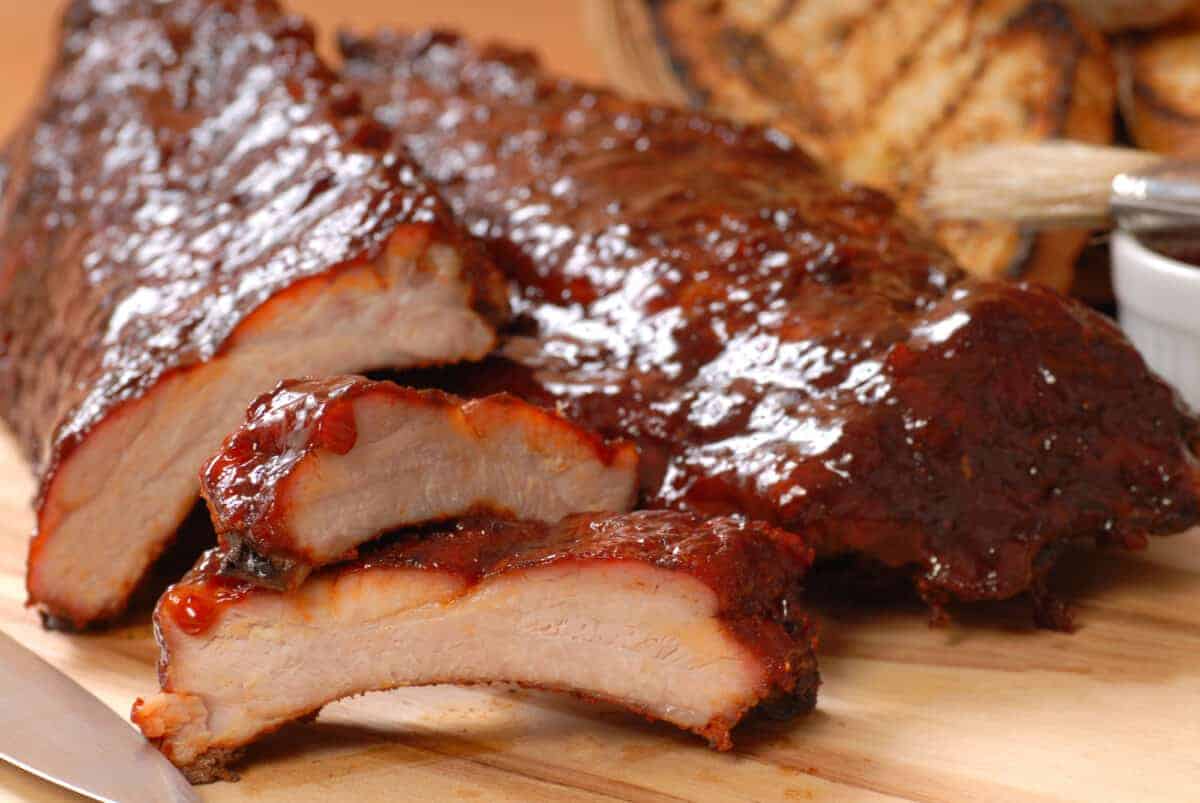
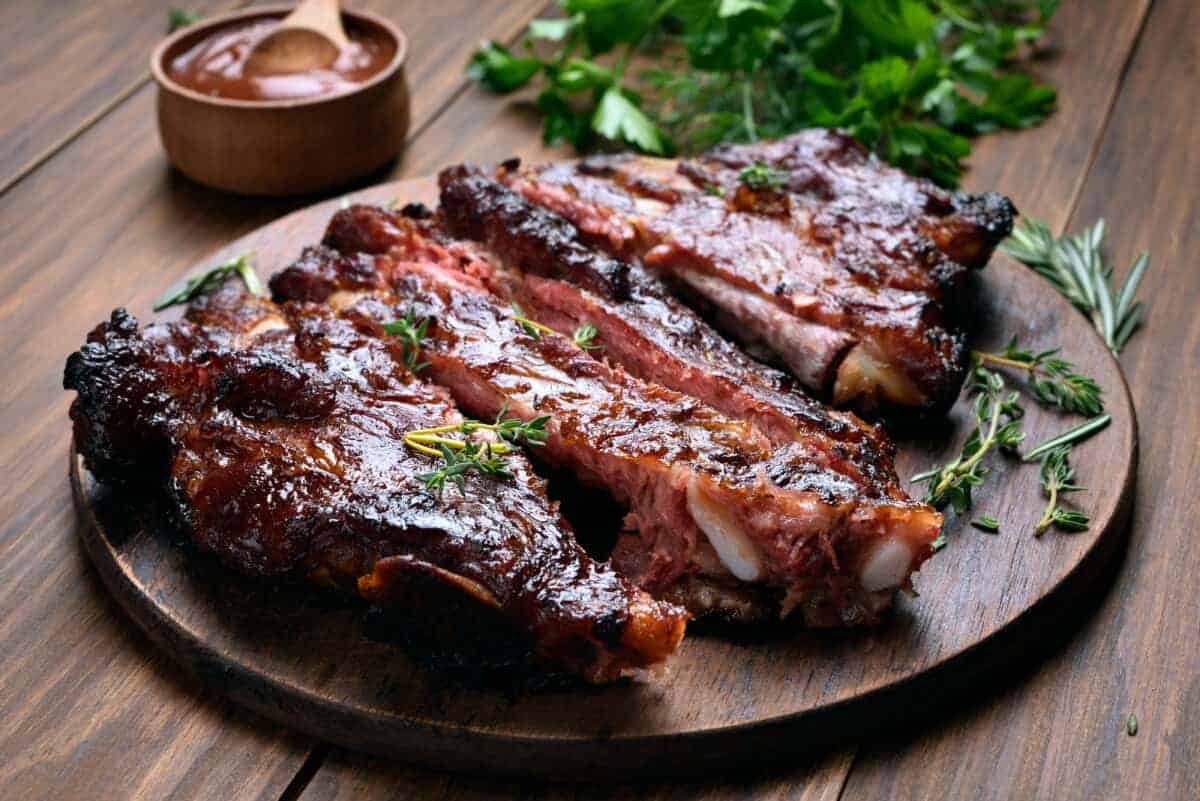
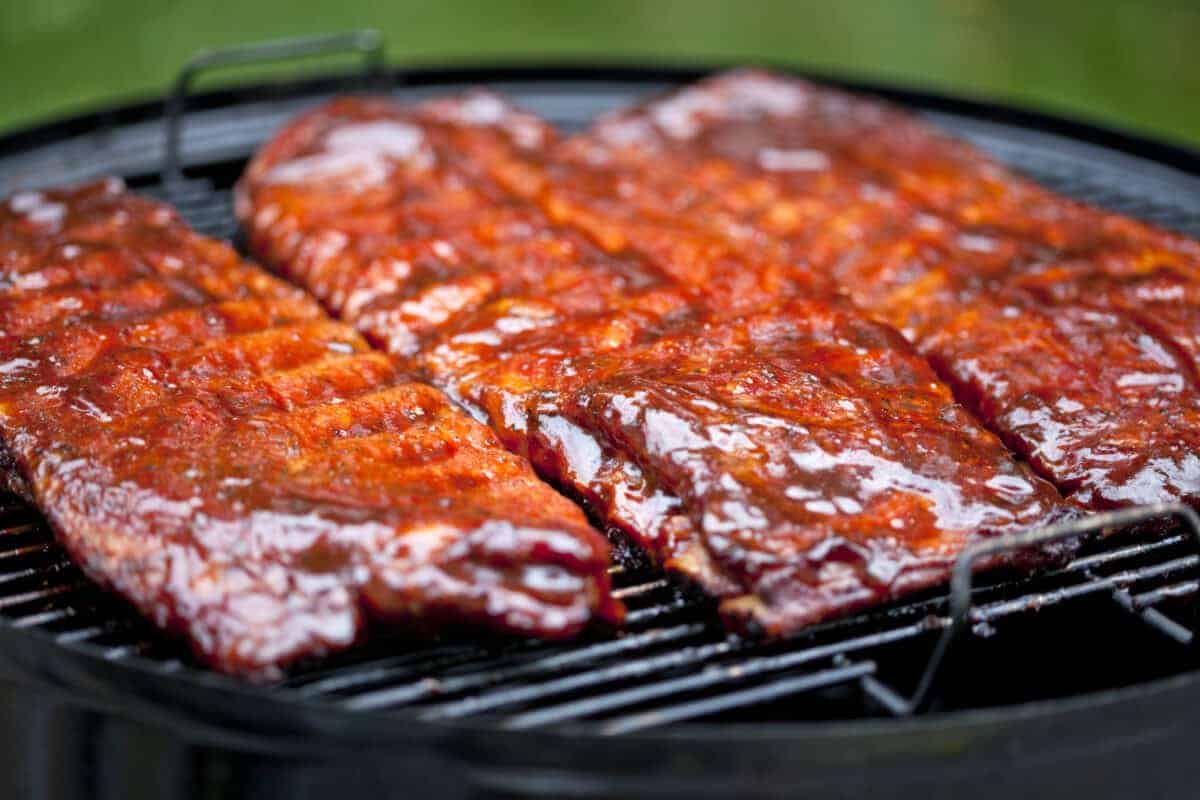
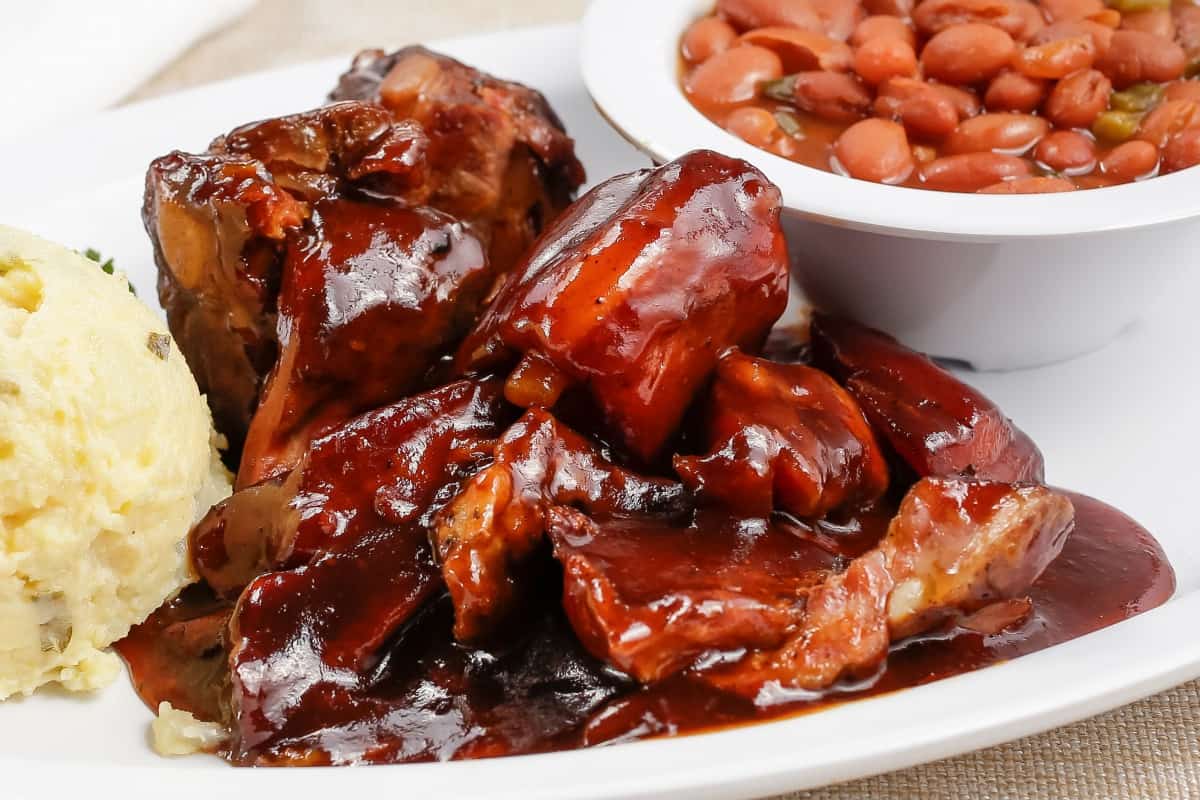
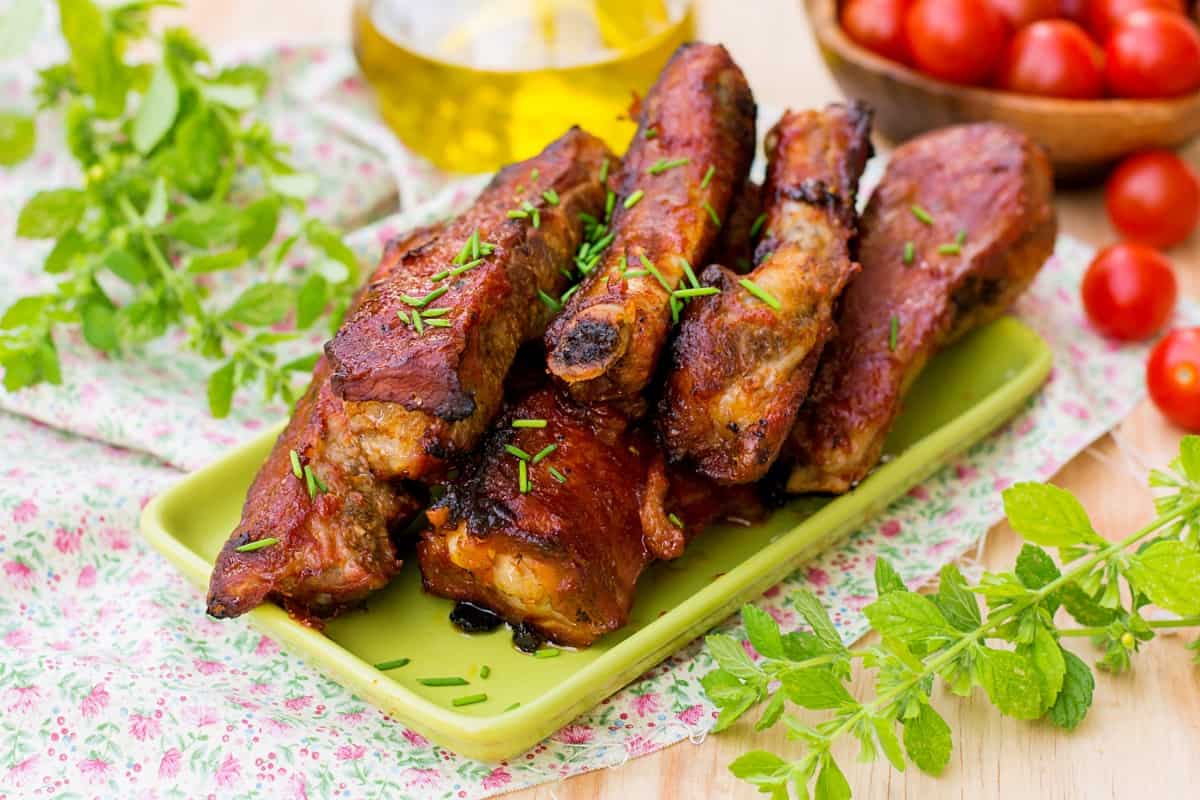
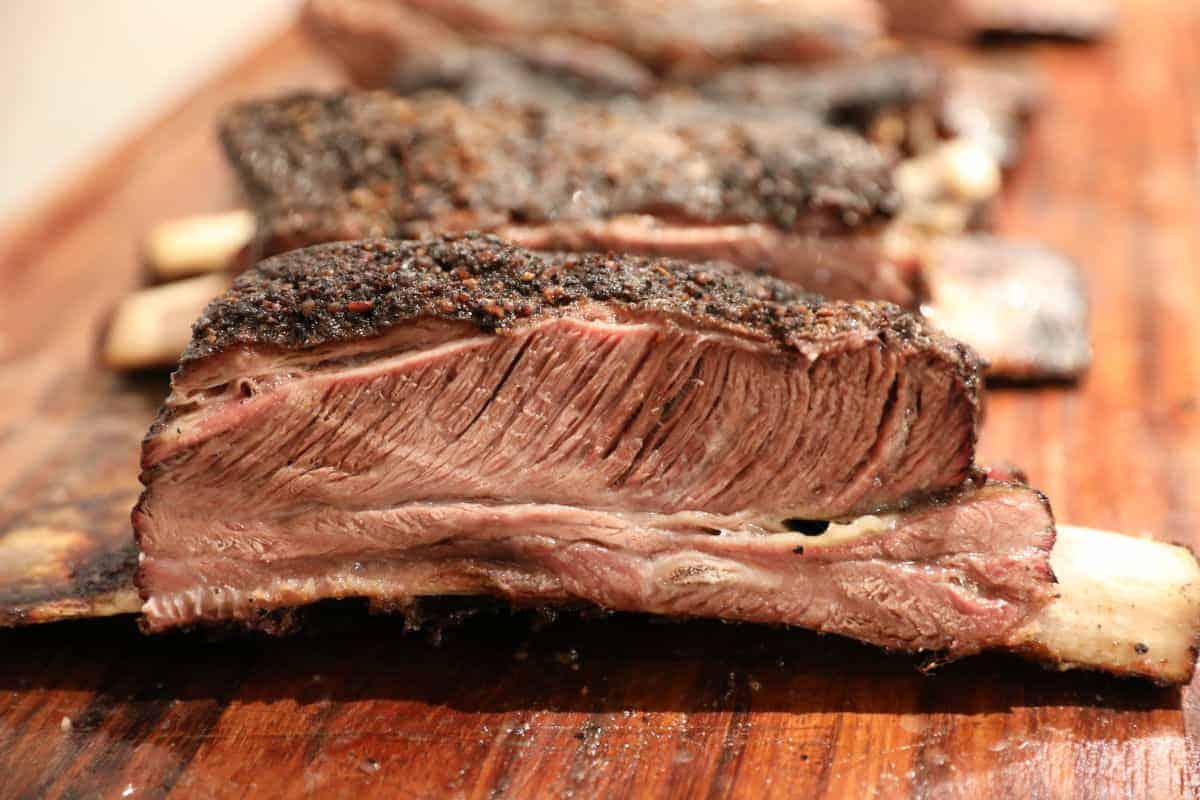
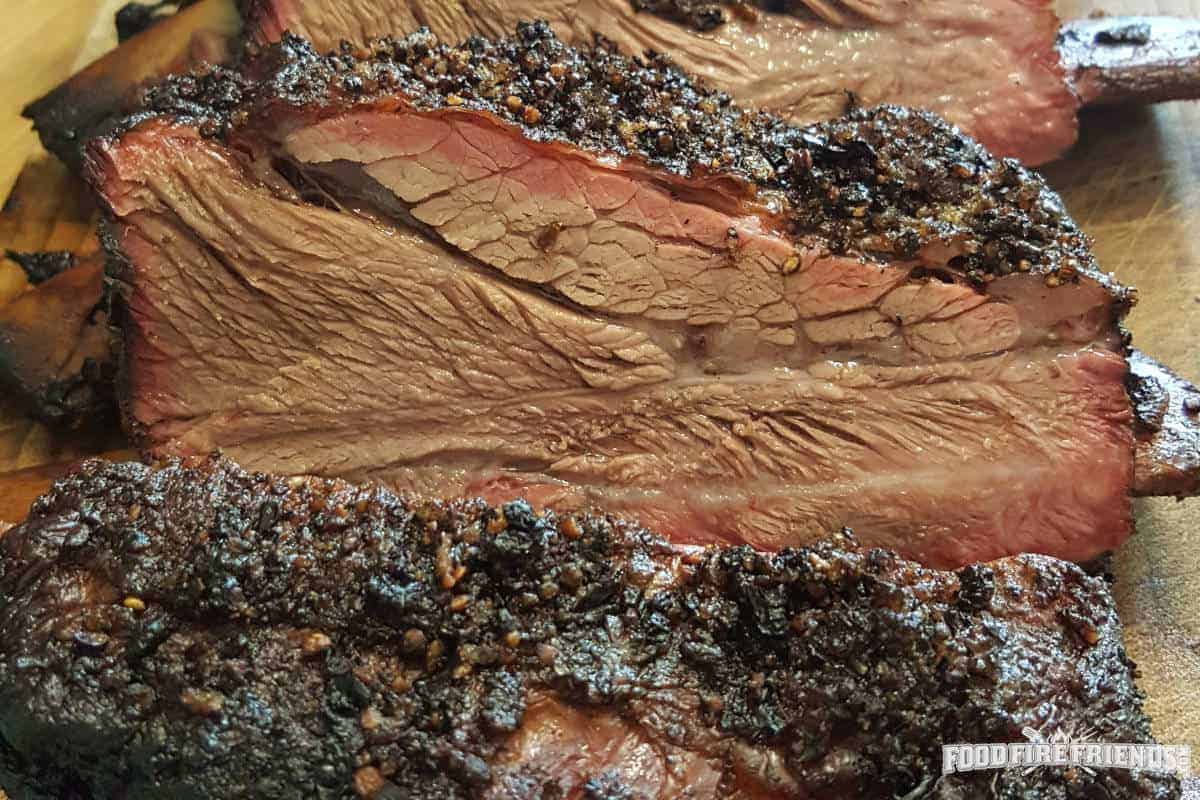
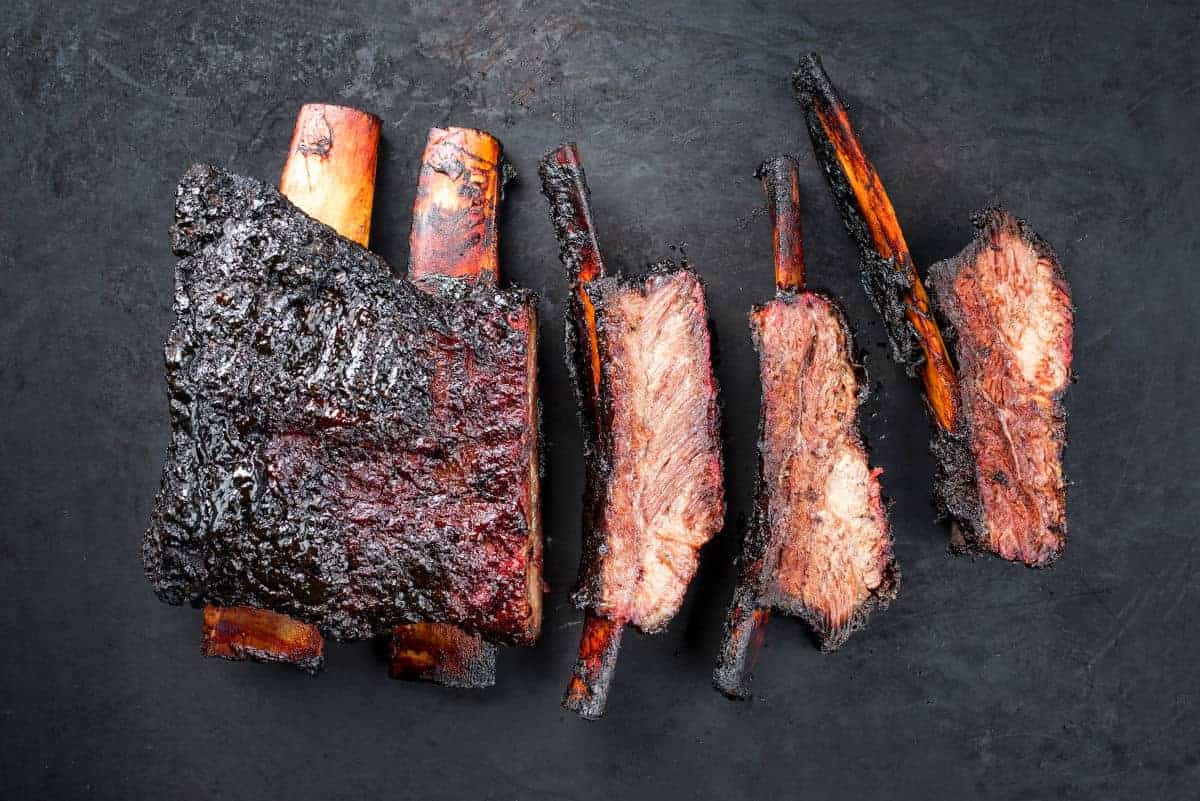
* Nutritional information was sourced from multiple places online and is, to the best of my knowledge, correct. But please double check before basing anything such as a strict diet on these values!
Difference in Taste Between Beef Ribs and Pork Ribs
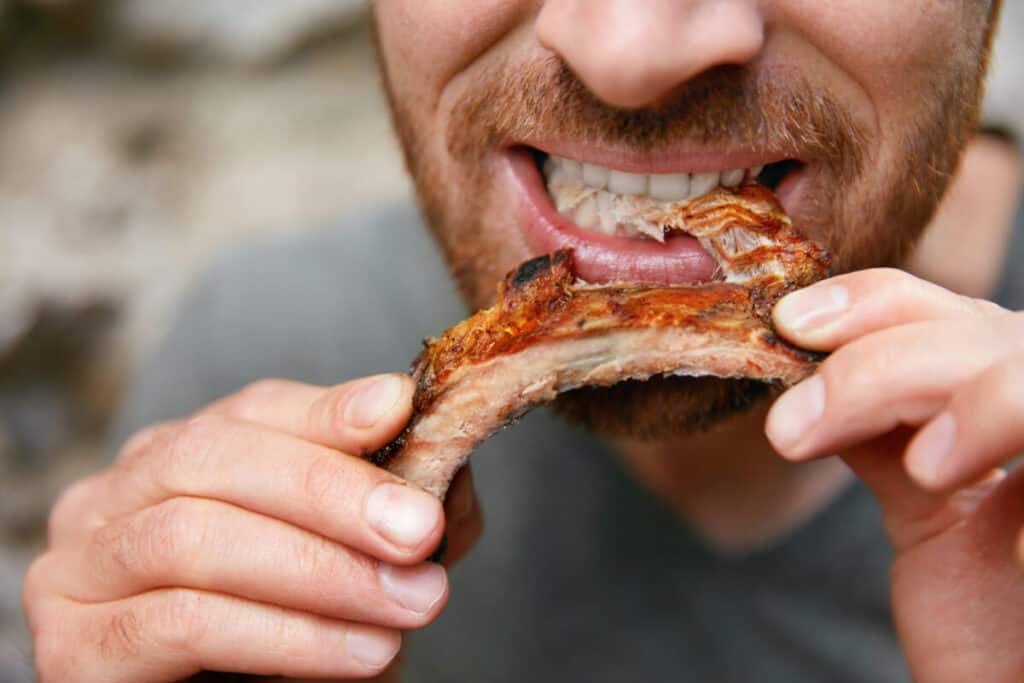
Describing flavors is never easy, but here goes with a taste comparison of beef ribs vs pork pork ribs.
Beef ribs have a very strong flavor, as all good cuts of beef do. It’s distinct and unmistakable — but what is it? I suppose you could call it “beefy,” but that breaks the old rule of never using a word in its own definition. A better word for beef flavor is “umami.” If you haven’t heard it before, that’s not a big surprise.
Umami is the fifth taste our tongues can detect, along with sweet, sour, salty, and bitter. Proteins release the deep rich flavor that is umami, and you find it in mushrooms, carrots, seaweed, bacon, and dry-aged beef. If you want to learn more about umami and beef, this article in Beef Magazine is a great place to start.
On the other hand, pork ribs have a much tamer flavor than beef, which you might describe as oddly sweet. On their own, they taste a lot like pork chops — mildly pleasant. But, that’s why chefs, pitmasters, and backyard barbecuers love them; they’re a blank canvas for painting on any combination of spices, seasonings, and sauces you care to try.
Size Comparison
Did you ever go to a farm and see a pig standing near a cow? Can you at least imagine them side-by-side? Then you can already guess that beef ribs are almost always bigger than pork ribs.
Beef ribs can be so huge that they’re sometimes sold under the name “dinosaur ribs.” (Hands up if you’re picturing Fred Flintstone at the drive-in restaurant!) Depending on the cut, a single rib might be 8 to a whopping 12 inches long and weigh 2 pounds or more.
Pork ribs are considerably smaller, with portions measured in ounces, with bones not more than a few inches long. However, because of the way butchers trim them, a rack of pork ribs may not be that much smaller than a rack of beef ribs before they’re packed and shipped to the grocer.
Pork Rib Cuts Overview
Like other sections of the pig, the butcher divides the ribs into various cuts, creating a few different types of pork ribs. And each cut has its own “personality” if you will.
Here’s a rundown of each pork rib cut and a few details about each.
Baby Back Ribs
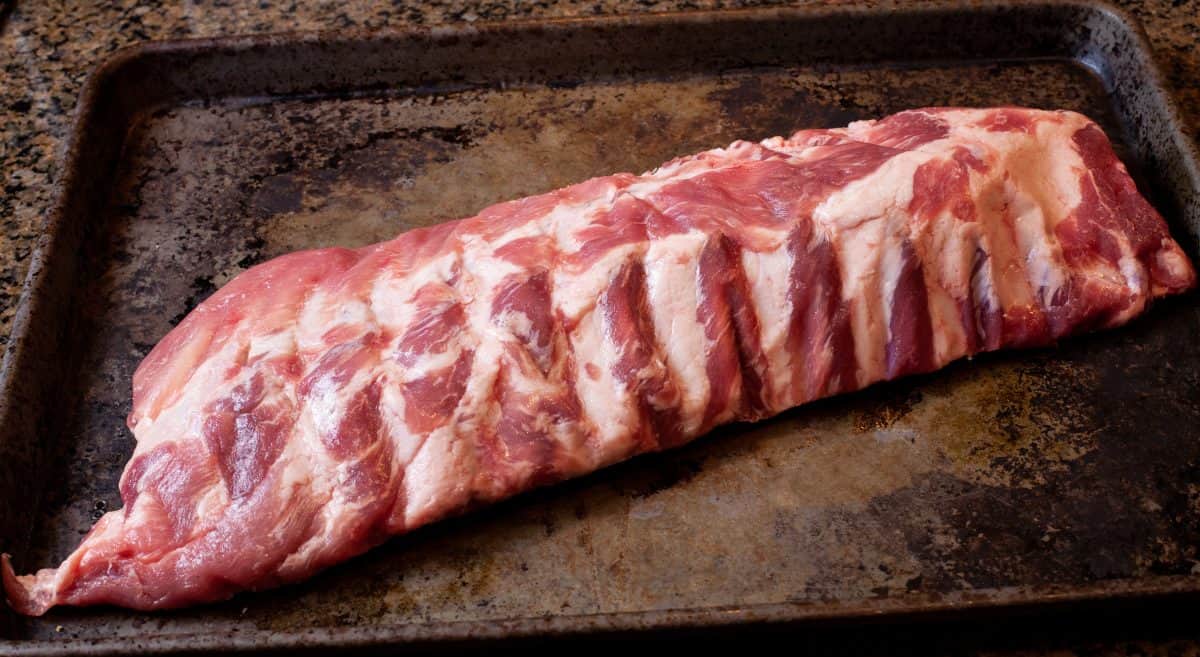
Baby back ribs are cut from the highest point on the rib cage, and are lean and tender. They aren’t as meaty as other pork ribs, but their convenient size and shorter cooking time make them popular at restaurants.
You may see them labeled as “loin ribs” or simply “back ribs.”
Spare Ribs
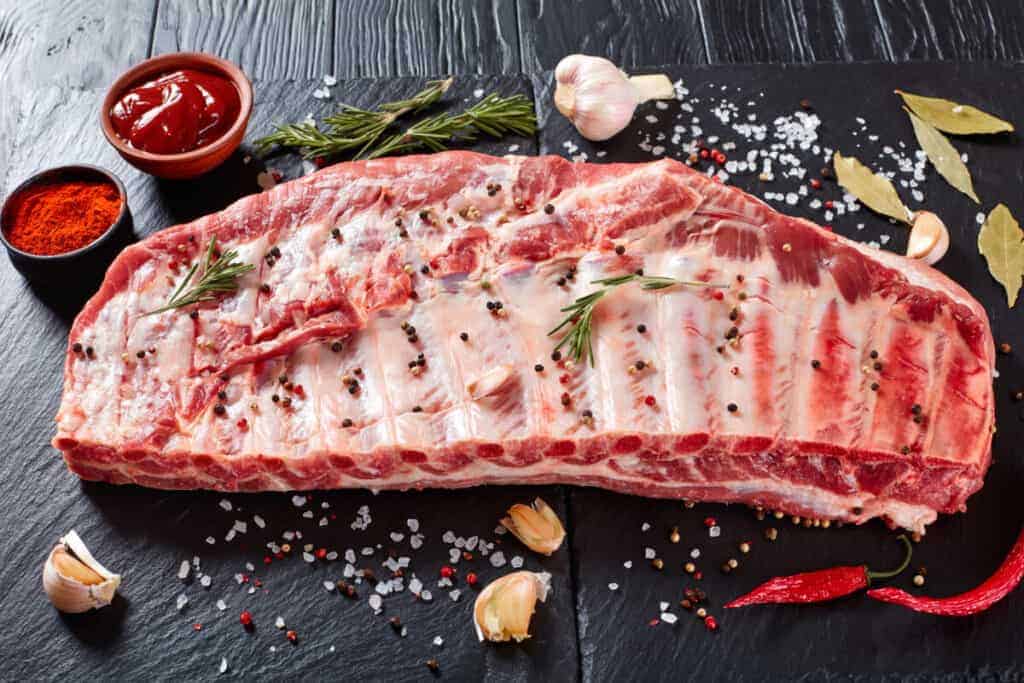
Wildly popular, spare ribs (sometimes shortened to ‘spareribs’) begin where the baby back ribs end. They extend down the side of the pig right to the breastbone. They don’t have the curve baby backs have, but they do have a fair bit more meat.
They’re typically less tender but more flavorful than baby back ribs. Other names include “side ribs” and plain old “spares.”
St. Louis Style Ribs
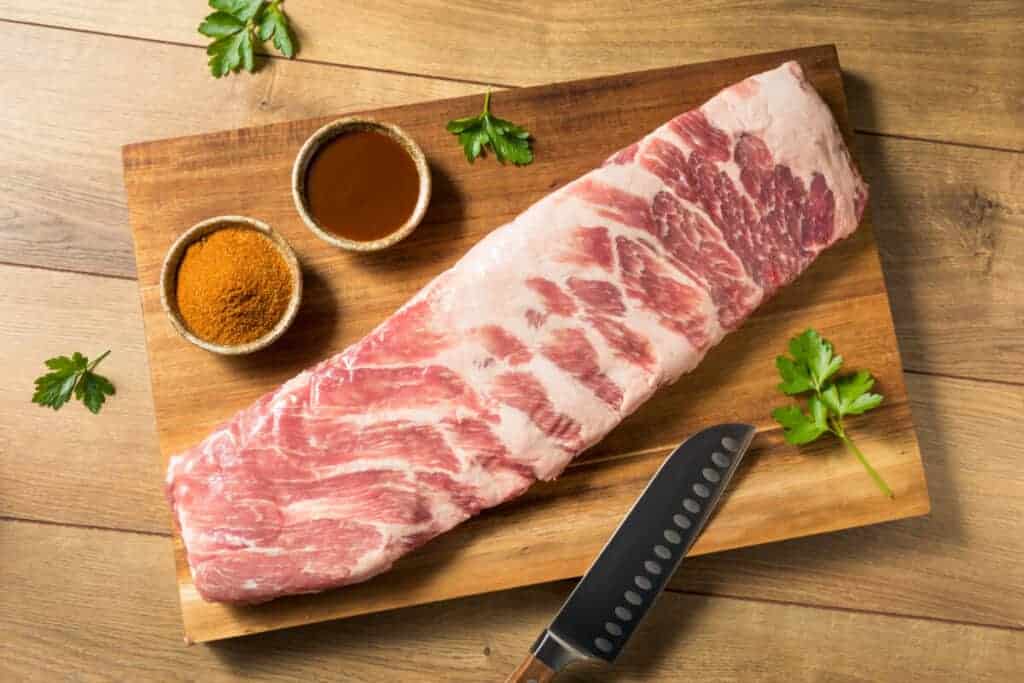
A tidy, mid-size rack, St. Louis ribs are cut from the spare ribs. The butcher removes the cartilage and small bits of bone from the ends of the spares and squares off the sides. The result is a flat, rectangular rack of good meat that cooks evenly and looks terrific on a platter.
They aren’t easy to find, though, so you may have to make your own.
Rib Tips

Rib tips are the ends that got cut off spare ribs to turn them into St. Louis ribs. They’re very tender, with a lot of fat marbling.
Rib tips aren’t easy to eat since the fat-to-meat ratio favors the fat. But, they’re very tasty and a lot of fun to pick up and nibble on.
Country Style Ribs

It’s a bit of a stretch to call these “ribs” but, we’ll cover them anyway. A better description would be “bone-in pork chop,” and depending on the cut, it may be one or two bones.
The meat is loin meat, so it’s tender and delicious. Yes, I’m trashing the name a bit, but the cut itself is a treat.
Beef Rib Cuts Overview
Since you can’t very well plate an entire beef rib from stem to sternum, beef ribs are divided into three separate cuts. Some butchers subdivide them even further, but these are the most common different types of beef ribs.
Let’s meet them, shall we?
Plate Short Ribs
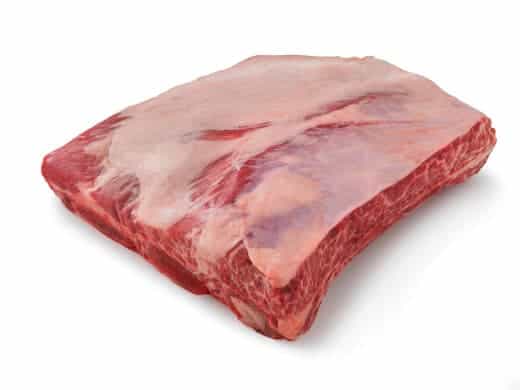
Plate short ribs are also called “beef short ribs”. These are massive, throw ‘em over your shoulder, release your inner cave person ribs that make drool-worthy pics for the web.
Plate short ribs come from the lower section of the rib cage, and they’re incredibly tender and loaded with meat.
Chuck Short Ribs
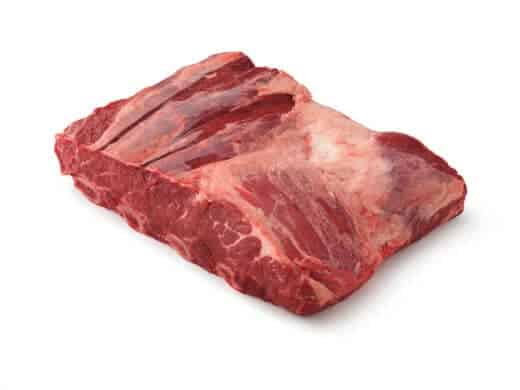
Chuck short ribs are less gargantuan than the plate short ribs, but still impressive. These ribs come from a little higher up towards the back of the cow. The bones are smaller, but there’s still a lot of meat to be had.
Chuck short ribs are a lot easier to find at the grocery store, too.
Beef Back Ribs
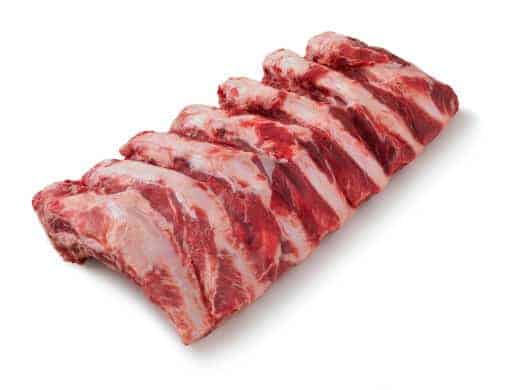
Found right up at the top of the back, beef back ribs look nothing like the short ribs. The meat is excellent — no surprise, since it’s basically what you get on a prime rib roast.
You don’t get the stack of meat on top of the bone like you do with shorts. Instead, all the yummy beef is sandwiched between the bones.
A Comparison of Fat to Meat Ratio and Fat Content
Want to know what you’re getting on your rack? Let’s assess the meat and fat contents of each type.
Remember: these are generalizations — meat and fat content varies from breed to breed and animal to animal, and will also change depending on how the butcher cuts the racks.
Pork Ribs
Overall, if you’re doing a side-by-side comparison with beef, pork ribs are lean and moderately meaty with more meat than fat and a lot of bone.
It varies from cut to cut, but generally speaking, pork ribs are reasonably lean, at least when compared to beef ribs.
The lower on the rib cage you go, the more the meat-to-fat ratio slides over to the fatty side, and the rib tips are mostly fat. The amount of bone is fairly consistent across the three major cuts (baby back, spare, St. Louis style).
Beef Ribs
To summarize, beef ribs are fattier than pork ribs, with closer to even portions of meat and fat. But, while the bones are larger individually, there is proportionately more meat per bone than on pork ribs.
Despite a pig’s reputation for being a chunky animal, there is a lot more fat in beef ribs than in pork. But, that’s ok; we eat them for the flavor, not for the health benefits!
There is also an enormous amount of meat on beef ribs, but it’s heavily marbled. The bones are huge, but you often get a walloping stack of beef piled on top of each rib.
Pork Ribs Nutritional Info
The following table is based on 4oz or a 1/4 pound of spare ribs.
| Nutrition | Total Amount | % Daily Value (based on 2000 calories/day) |
|---|---|---|
| Calories | 230 | |
| Total Fat | 16 g | 25% |
| Cholesterol | 70 mg | 23% |
| Sodium | 90 mg | 4% |
| Protein | 17 g | |
| Calcium | 0% | |
| Iron | 4% |
Beef Ribs Nutritional Info
The following table is based on 4oz or a 1/4 pound of short ribs.
| Nutrition | Total Amount | % Daily Value (based on 2000 calories/day) |
|---|---|---|
| Calories | 345 | |
| Total Fat | 25 g | 39% |
| Cholesterol | 113 mg | 38% |
| Sodium | 80 mg | 3% |
| Protein | 29 g | |
| Calcium | 1.0% | |
| Iron | 17% |
Price Comparison
Pork ribs are, on average, less expensive than beef ribs. What you pay will vary depending on the cut and where it’s from; your typical grocery store rack will be considerably less expensive than one sourced from, say, a local organic farm.
At the time of writing, baby back ribs average around $4.50/lb or about $9.90/kg. Thanks, to lower demand, spare ribs are closer to $3.00/lb or $6.60/kg.
For beef ribs, expect to shell out a bit more. While back ribs are similarly priced (averaging $4.50/lb or $9.90/kg), the coveted short ribs are in the neighborhood of $7.00/lb or $15.40/kg.
My Experience and Views on Beef Ribs Vs Pork Ribs
As someone who loves all kinds of ribs, I find both pork and beef ribs have their unique charm. However, my personal favorite has to be beef ribs.
While I enjoy pork ribs’ lighter taste and versatility, beef ribs win me over with their robust flavor and hearty texture.
I tend to treat pork ribs as a go-to BBQ staple and cook them almost every time I throw a party at my house. They are far more economical, and many more people seem to eat pork ribs but turn their noses up at beef ribs. (What is THAT all about?!)
But beef ribs, for me, are an occasional treat. They are so rich and unctuous, and pack a powerful flavor punch that they are, for me, something extraordinary. They also cost a fair chunk more than pork ribs, so buying them for a crowd can be prohibitively expensive.
I also tend to cook beef ribs in place of brisket. They taste quite similar, cook in half the time, and cost way less money. So they are a regular at my house.
My go-to beef ribs are what’s called a ‘Jacobs Ladder.’ This is a full rack of short ribs. You can see how I cook mine here: Smoked beef ribs recipe.
I buy meaty baby back ribs or spare ribs for pork ribs. I tend not to bother with St Louis ribs as you pay extra for the time needed by the butcher to cut spares into St Louis and get less meat. I buy spare ribs, cut off the tips off, and square them up myself, keeping some scraps for sausages and cooking the tips separately. This gives me the best bang for my buck.
How to Cook Pork Ribs
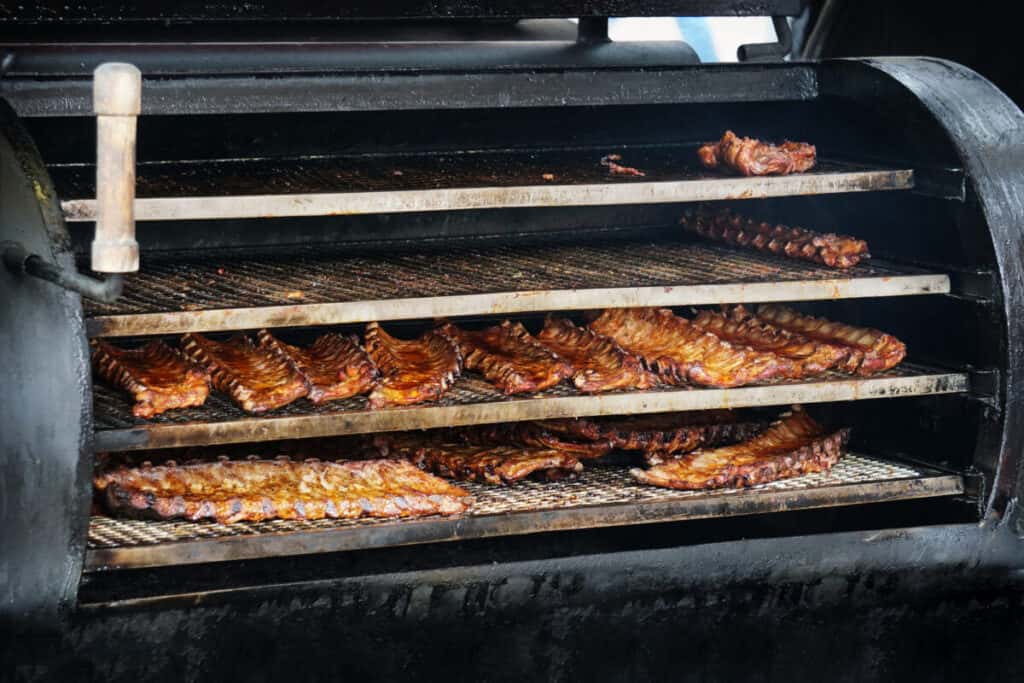
When smoking pork ribs, preparation is key. Start by trimming excess fat and removing the membrane. Then apply your dry rub.
Pork ribs’ smoking time and temperature depend on the cut and your preference. Typically, pork ribs smoke for 5-6 hours at 225 to 250 °F. Choose your wood based on your desired flavor: mesquite or hickory for a strong smoke flavor; apple, cherry, or maple for a lighter, fruity smoke.
Many experts recommend wrapping the ribs in foil during the smoke session. This method ensures moist, tender ribs with rich flavor and can knock an hour or two off the total cooking time.
A popular technique is the 3-2-1 method: smoke the ribs for 3 hours, wrap in foil with liquid and smoke for 2 hours, then smoke unwrapped at a slightly higher temperature for 1 hour. This method simplifies the smoking process and is great for beginners.
For smaller racks or a less crispy bark, consider the 2-1-1 or 2-1-0.5 methods.
If you want sauced ribs, apply the sauce in the last 30 minutes to prevent burning.
Ribs are done when they reach an internal temperature of 190 °F–200 °F and feel tender when poked with a skewer, despite pork being safe to eat at 145 °F.
How to Cook Beef Ribs
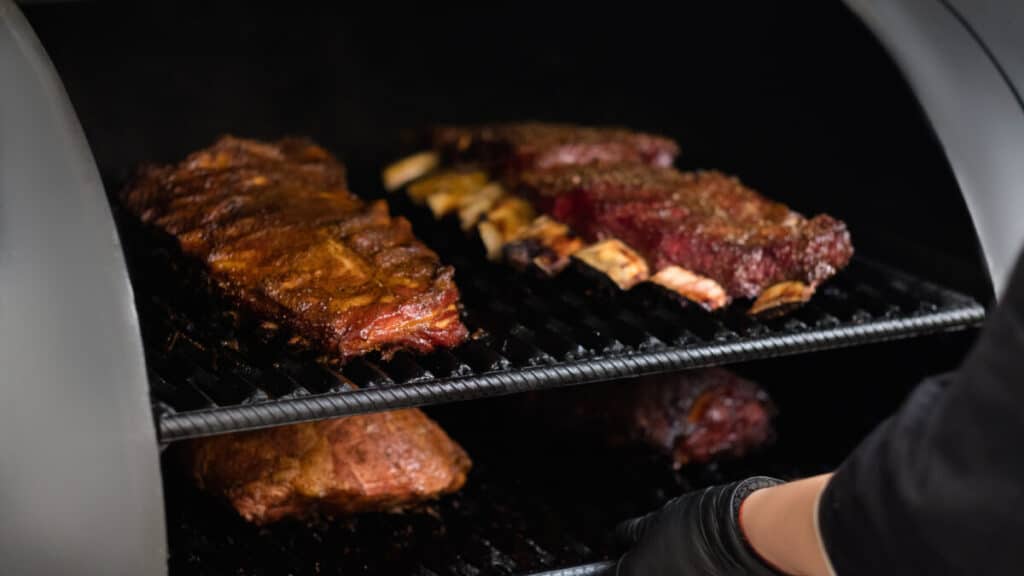
Unlike pork ribs, beef ribs don’t usually need trimming or membrane removal. The membrane helps keep the meat on the bones but feel free to remove it if it bothers you.
Keep seasonings simple to enhance the natural flavors of beef ribs. Most people recommend that salt and pepper are enough, though a touch of garlic salt, onion salt, or chili is fine. Avoid over-spicing beef ribs, unlike with pork ribs. Avoid any sugar or commercial rubs containing sugar, as the sweetness does not suit beef ribs.
Set your smoker to 225 – 250 °F for a traditional low and slow approach. As beef ribs are robust, you can increase the temperature to 275 – 300 °F for quicker cooking. The exact time required to smoke beef ribs depends on their size, but in my experience, it’s anything from 6 to 9 hours.
Choose strong-flavored woods like mesquite, hickory, pecan, oak, and add some cherry wood for the beautiful red hue it adds to the bark. Lighter woods like maple or alder are too mild for beef’s strong flavor in my experience.
You can use the Texas crutch method, wrapping the ribs in butcher paper or foil to speed up the cooking and keep more moisture in the final meat. This is controversial; some say it makes the meat mushy and ruins the bark, while others like the tenderness and shorter cooking time. Try both wrapped and unwrapped to see which you prefer.
Cook beef ribs way past the USDA’s safe temperature of 145 °F, aiming for at least 190 °F, but almost always closer to 200 °F. This higher temperature renders the fat and collagen, making the meat tender. And always cook to feel, not time or temp. They should probe like butter, and then they are ready.
Where to Buy Beef Ribs Online
A number of online outlets sell beef ribs, making variety and price range highly variable! Here are two of the most popular suppliers:
Porter Road
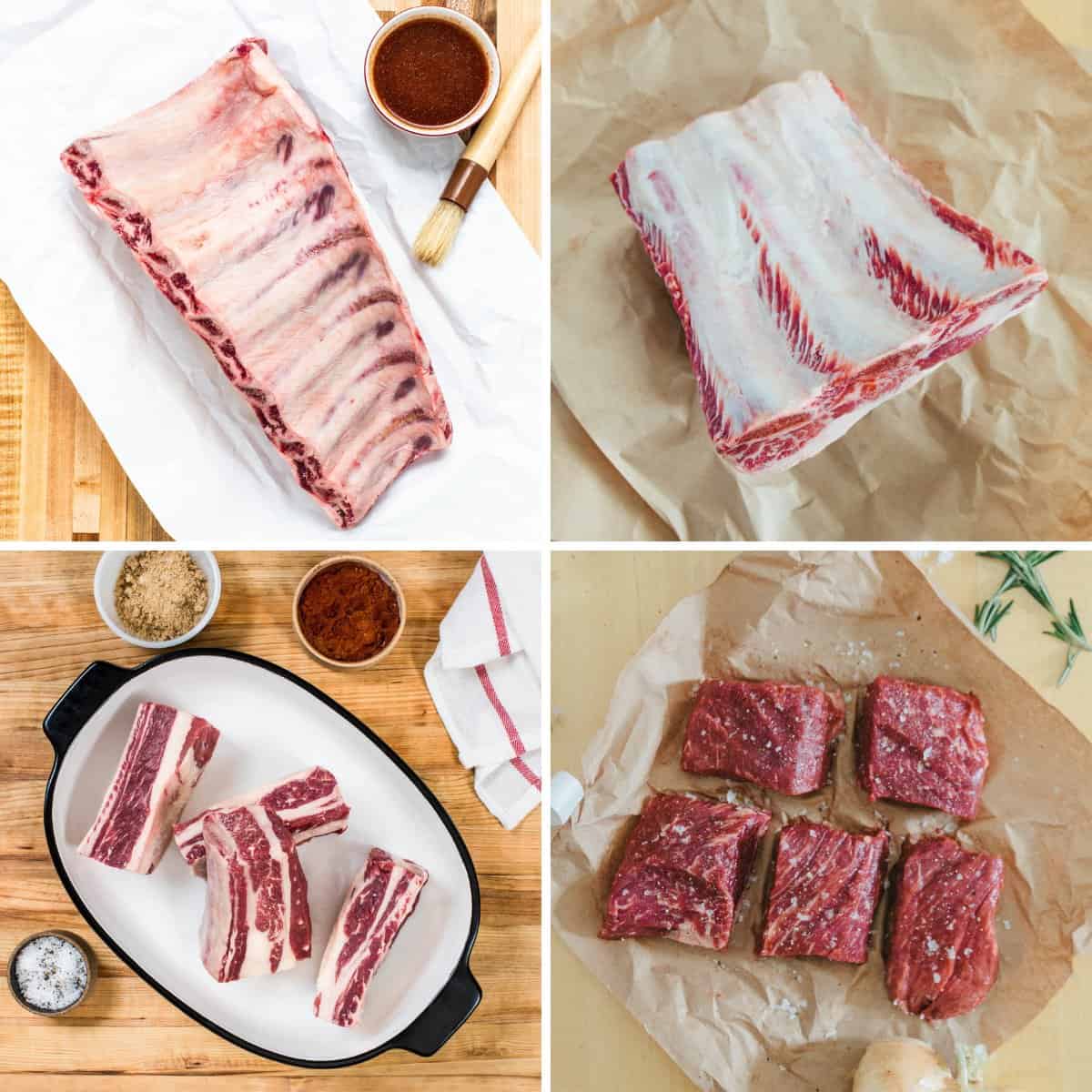
Porter road have a selection of four different beef rib cuts available that are all pasture-raised and hormone and antibiotics free:
- Beef back ribs, shipped frozen, weighing between 2 and 3 lbs per rack. These ribs are cut from a whole ribeye section, leaving a generous amount of rich marbled meat.
- Dino ribs, shipped frozen, weighing between 5 and 7 lbs per rack. Cut from the first 3 ribs of the rib plate, these 8”+ ribs are dry-aged for maximum flavor and are the giant ribs you see in Instagram pics that are sure to impress your guests!
- Texas short ribs, shipped frozen, 4 per pack weighing a combined 2.75 to 3.25 lbs. These individually cut portions smoke and eat well with their balanced mix of meat and fat.
- Boneless short ribs, 5 per pack weighing a combined 2.4 to 2.7 lbs. Though still generously marbled and packed with flavor, these are the leanest of their beef ribs on offer.
Snake River Farms
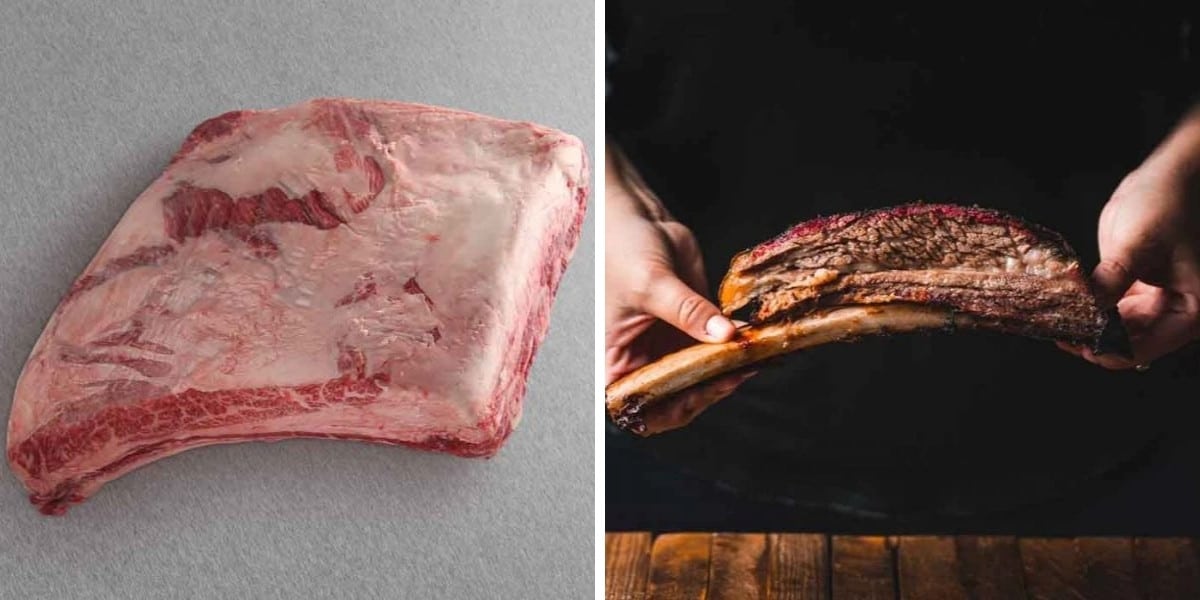
Snake River Farms short ribs are American Wagyu Black grade, which means they have a higher marbling than even USDA prime, which provides a beefy umami richness and depth of flavor that has to be tasted to be believed.
Each rack weighs in at an average 6 lb, so they are large and have that instagrammable ‘dino rib’ appearance.
Check Price on Snake River Farms
Where to Buy Pork Ribs Online
Pork ribs are sold by the vast majority of online outlets, making them easy to source, and affordable due to the amount of competition.
Here are a couple of suppliers that we highly recommend:
Snake River Farms
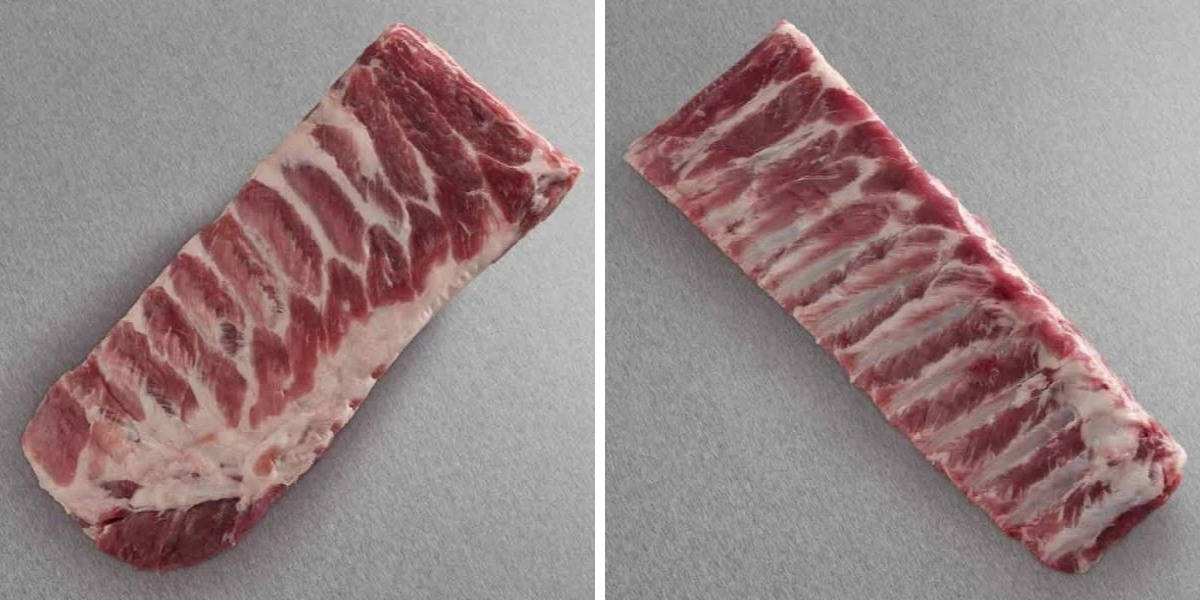
Snake River Farms spare ribs are a full-sized rack weighing on average 1.5 lbs. They are 100% purebred Berkshire Kurobuta pork, raised naturally with no added hormones, providing generous amounts of meat and flavorful marbling.
They also sell baby back ribs of the same quality, from the same purebred species, that come in at an average weight of 1lb per rack.
Check Price on Snake River Farms
Porter Road
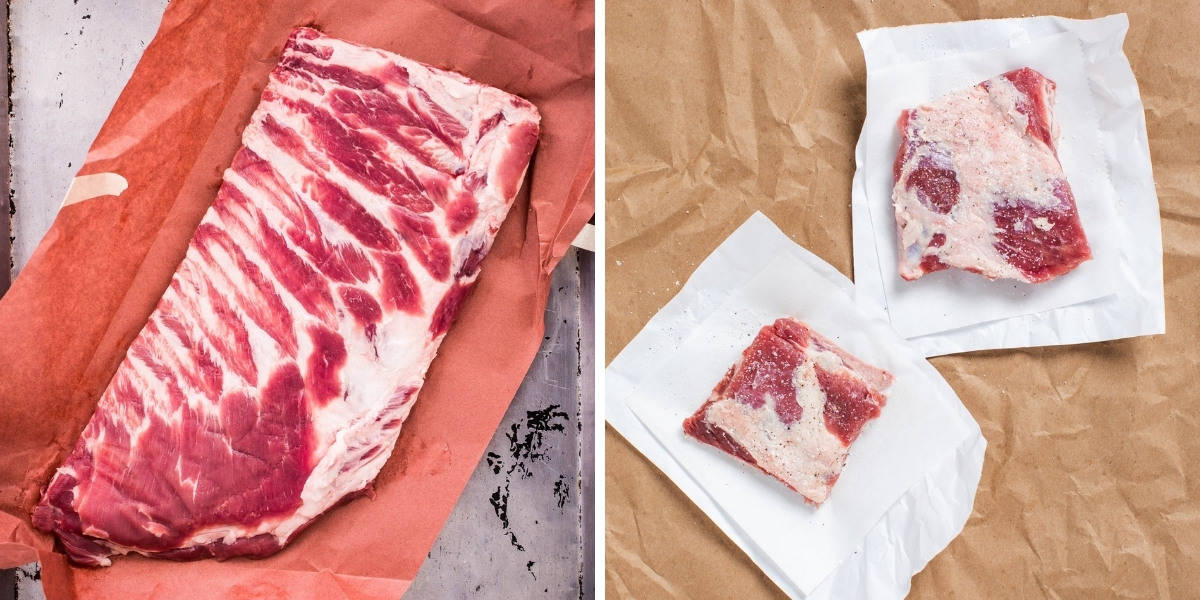
Porter roads spare ribs are all-natural, hormone and antibiotic-free, coming from pigs that live out in and explore the woods, giving a rich deep red meat that is full of flavor. Very meaty and well-marbled, each rack weighs between 2 and 3 pounds.
Their pork short ribs are actually a cut I’ve not come across anywhere else! Porter Road describes them as a cut that: “combines the perfect ratio of fat and meat….(they) start tough, and are ideal for smoking or braising in the crockpot. Settle in for a few hours of cooking, the payoff for your patience will be outstanding.”
Sounds great to me!
Final Thoughts
Now that you’re up to speed on both pork and beef ribs, which will you tackle next in your smoker? Of course, there’s no wrong answer to that question. Either way, it’ll be another exciting step on the road to mastering the grill in all its forms.
Thanks for trusting us to answer your questions on pork ribs vs beef ribs. If you like what you read here, please share it with your barbecue brethren. And, come join us on social to connect with other BBQ fans and see what’s new at our site.
Here’s to being the best griller you can be.


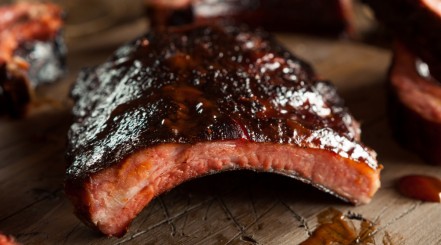
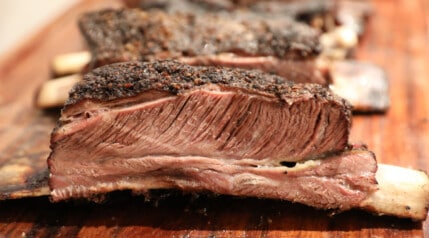

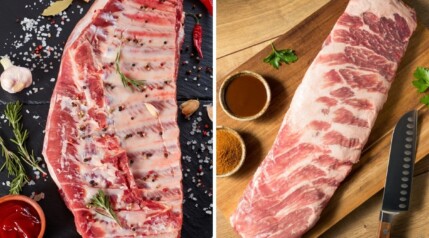
Thank you for the super informative article with great photos, I came here to learn about beef vs. pork ribs and was not disappointed!